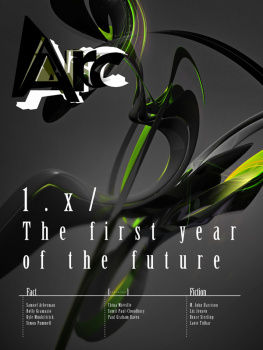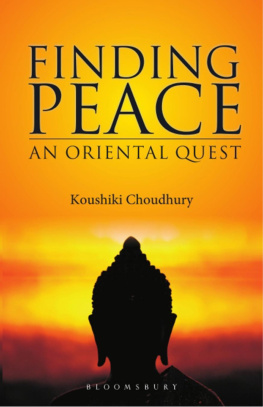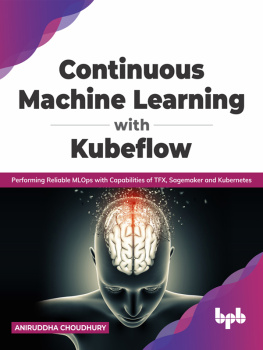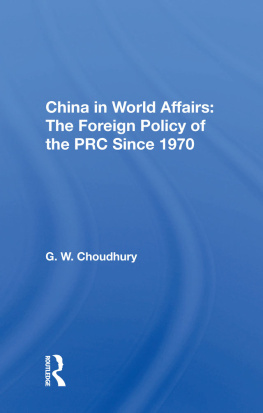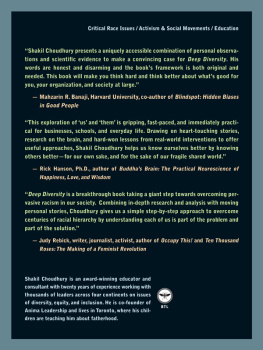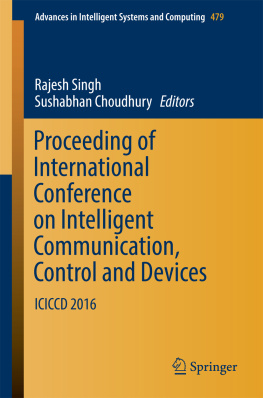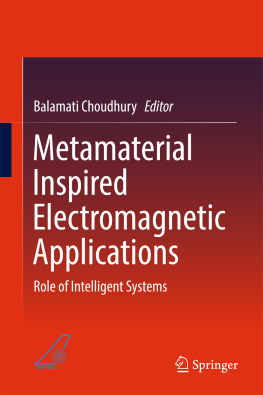Paul-Choudhury - Arc 1.x / The first year of the future
Here you can read online Paul-Choudhury - Arc 1.x / The first year of the future full text of the book (entire story) in english for free. Download pdf and epub, get meaning, cover and reviews about this ebook. year: 2013, publisher: John MacFarlane, genre: Art. Description of the work, (preface) as well as reviews are available. Best literature library LitArk.com created for fans of good reading and offers a wide selection of genres:
Romance novel
Science fiction
Adventure
Detective
Science
History
Home and family
Prose
Art
Politics
Computer
Non-fiction
Religion
Business
Children
Humor
Choose a favorite category and find really read worthwhile books. Enjoy immersion in the world of imagination, feel the emotions of the characters or learn something new for yourself, make an fascinating discovery.
- Book:Arc 1.x / The first year of the future
- Author:
- Publisher:John MacFarlane
- Genre:
- Year:2013
- Rating:5 / 5
- Favourites:Add to favourites
- Your mark:
- 100
- 1
- 2
- 3
- 4
- 5
Arc 1.x / The first year of the future: summary, description and annotation
We offer to read an annotation, description, summary or preface (depends on what the author of the book "Arc 1.x / The first year of the future" wrote himself). If you haven't found the necessary information about the book — write in the comments, we will try to find it.
Arc 1.x / The first year of the future — read online for free the complete book (whole text) full work
Below is the text of the book, divided by pages. System saving the place of the last page read, allows you to conveniently read the book "Arc 1.x / The first year of the future" online for free, without having to search again every time where you left off. Put a bookmark, and you can go to the page where you finished reading at any time.
Font size:
Interval:
Bookmark:
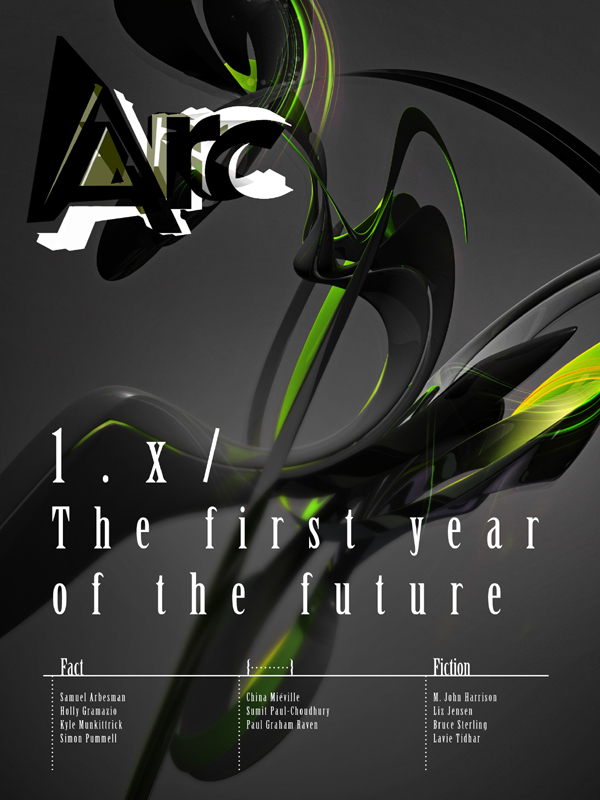
Arc
1.x / The first year of the future
http://www.arcfinity.org
Lacon House, 84 Theobalds Road
London WC1X 8NS
Editor-in-chief
Sumit Paul-Choudhury
Managing editor
Simon Ings
Art editor
Craig Mackie
Picture editor
Adam Goff
Sub editor
Sean ONeill
Publisher
John MacFarlane
Digital director
Neela Das
Marketing
David Hunt
Production
Melanie Green
Mick OHare
Connect:
http://arcfinity.tumblr.com
http://www.twitter.com/arcfinity
http://www.facebook.com/arcfinity
Subscribe/Back Issues:
http://www.arcfinity.org/subscribe
Copyright Reed Business Information Ltd. England
Arc is published quarterly by Reed Business Information Ltd.
ISSN 2049-5870
Arc was conceived by Henry Gomm, John MacFarlane and Sumit Paul-Choudhury
W elcome to Arc - a futuristic collection of fact, fiction and opinion from the makers of New Scientist. Each quarter, we prospect the future, gathering stories, speculation, witness and opinion from the very best writers we can find. Arc is your entertaining, provoking, infuriating, wildly unreliable and deadly serious guide to tomorrow. Each stunningly illustrated, book-length digital collection runs to around 160 print pages.
This sampler brings together some of our favourite pieces from our first year of publication. The first four volumes of Arc are still available and as good a read now as ever. After all, they were made for the future.
We hope youll enjoy this taste of Arcs first year. Do follow us youll find us as arcfinity on Twitter, Facebook and Tumblr, or at arcfinity.org to keep up to date with what were working on, including details of our regular short story competition. Were making more of the future all the time.
Simon Ings
Managing Editor
Sumit Paul-Choudhury
Editor-in-Chief

Arc 1.1: The future always wins
Margaret Atwood headlines our debut issue, featuring some of the biggest names in science fiction: Bruce Sterling, Stephen Baxter, M John Harrison, Hannu Rajaniemi, Alastair Reynolds and Adam Roberts. Also in this issue: how we lost the oceans to our machines; a meeting with the collapsonomics crowd; the best time-travel movie ever made; and China Miville making first contact with some genuinely alien intelligences.

Arc 1.2: Post human conditions
What happens when humans are pushed beyond their usual design tolerances? In this issue, we talk to online animals and rubber aliens, consider the plight of bored astronauts and Soviet science fiction filmmakers, go in search of the future in South Korea and take a look at grown-up games in the city. Golden Age legend Fred Pohl provides the intro; award-winning writers Nick Harkaway, Paul McAuley and Jeff VanderMeer the fiction.

Arc 1.3: Afterparty overdrive
The partys over. The worlds ravaged, the economys kaput. But no matter how bad things get, well always know how to party. Lavie Tidhar heads a cast of hot new writers including Tim Maughan, Nan Craig and David Gullen in an issue that laughs in the face of the gathering dark. What happens when music doesnt need us any more? Can the Singularity be stopped? What are facts, anyway? And why is Neal Stephenson building a 20km high tower?

Arc 1.4: Forever alone drone
Are you lonely tonight? Really? How can you be sure? Drone planes and hidden cameras, voyeurs and angels cluster round to read stories of the technological wilderness by Nancy Kress, Robert Reed, Bruce Sterling, Liz Jensen and Jack Womack. Plus: what urban infiltrators can tell us about life in future cities, why were all becoming drone pilots, Icelands digital fortress, an American trapped in America and Kim Stanley Robinson on the ultralite lifestyle.
Liz Jensen
Bruce Sterling
Sumit Paul-Choudhury
Samuel Arbesman
Lavie Tidhar
Holly Gramazio
Kyle Munkittrick
China Miville
Paul Graham Raven
Simon Pummell


In the future, machines will make discoveries beyond the ken of humankind. Samuel Arbesman thinks this merits a proud hug
Scientific knowledge has been expanding for some time. No one can be expected to be well-versed in our entire body of knowledge. These days, our insights often come from recombining what we happen to know. And thats the trouble: imagine a paper in one corner of science says that A implies B, and another paper, elsewhere, says that B implies C. Due to the magnitude of scientific endeavour, there is no longer any guarantee that someone will think to combine these papers.
This is real. Don Swanson, an information scientist active in the 1980s, dubbed this elusive, tip-of-the-tongue not-quite-insightundiscovered public knowledge and now, with computational help, many discoveries and relationships have been revealed that previously lay hidden. The balance between the scientific abilities of humans and computers is shifting. What will happen when computers cease to merely assist us with our discoveries, and discover things for themselves things we cannot understand?
Unassisted human insight seems to be reaching it slimits. In the future and sooner rather than later we will arrive at a point in science and mathematics where any discovery that is made (by computers, of course) will be only dimly understood by human beings. Steven Strogatz has written about his with a bit of worry. He argues that we are living in a special window of time, stretching from the dawn of the scientific revolution 350 years ago to a point a few decades into the future. Only people living in this window can truly say that they have understood the world.
Strogatzs window is already closing. In mathematics there is something called the four-colour problem. Draw a map as intricate as you like, full of wiggles, crenellations and complicated frontiers. You will always be able to colour that map, distinguishing each territory from its neighbours, with just four colours. The proof of this was assembled with the help of computers in 1977, and no single person understands it. The proof is inelegant, gargantuan and computationally complex. We know it is true, but we do not know why. More recently, in 2009, Michael Schmidt and Hod Lipson created an AI program that could distil the laws of motion merely by observing data from the swings of a double pendulum. In the process, they created an AI capable of deriving meaning from datasets too large or complex for humans to study.
Next pageFont size:
Interval:
Bookmark:
Similar books «Arc 1.x / The first year of the future»
Look at similar books to Arc 1.x / The first year of the future. We have selected literature similar in name and meaning in the hope of providing readers with more options to find new, interesting, not yet read works.
Discussion, reviews of the book Arc 1.x / The first year of the future and just readers' own opinions. Leave your comments, write what you think about the work, its meaning or the main characters. Specify what exactly you liked and what you didn't like, and why you think so.

